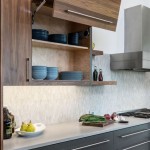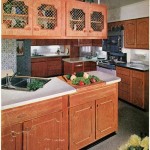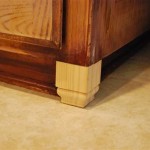Kitchen Cabinet Refurbishment: A Guide to Revitalizing Your Space
Kitchen cabinets are a focal point in any home, and over time, they can show signs of wear and tear. Whether it's scratches, faded paint, or outdated hardware, these imperfections can detract from the overall aesthetics of your kitchen. Fortunately, kitchen cabinet refurbishment offers a cost-effective and transformative solution to breathe new life into your existing cabinetry. This guide will delve into the essential aspects of kitchen cabinet refurbishment, providing valuable insights for homeowners seeking to revitalize their kitchen spaces.
1. Assessing Your Cabinets and Defining Project Scope
Before embarking on any refurbishment project, a thorough assessment of your cabinets is crucial. This involves evaluating their condition, functionality, and aesthetic appeal. Consider the following factors:
- Structural Integrity: Check for any structural damage, such as warped doors, loose hinges, or sagging shelves. If significant structural issues exist, repair or replacement may be necessary before proceeding with refurbishment.
- Surface Condition: Assess the current surface finish, noting any scratches, dents, chips, or fading. The severity of these imperfections will determine the extent of preparation required.
- Functionality: Evaluate the functionality of your cabinets, considering factors like storage space, drawer mechanisms, and door openings. This will help determine if any modifications or upgrades are needed.
- Aesthetic Appeal: Consider the overall look of your cabinets, including the color, style, and hardware. Decide whether you want to retain the existing aesthetic or embrace a complete makeover.
Once you have a clear understanding of the condition and desired outcome, you can define the scope of your refurbishment project. This will involve deciding whether you will be focusing on simple updates, such as repainting and new hardware, or more extensive modifications, such as replacing doors or adding new features.
2. Choosing the Right Refurbishment Approach
There are various approaches to refurbishing kitchen cabinets, each with its own benefits and considerations. The most common options include:
2.1. Repainting
Repainting is the most straightforward and cost-effective way to refresh your cabinets. This involves sanding the existing finish, applying a primer, and then painting with your chosen color. Consider a professional painter for a flawless finish. For a more durable finish, consider using an epoxy paint or a combination of paint and a protective glaze.
2.2. Refinishing
Refinishing involves stripping the existing finish, sanding the wood to smooth out imperfections, and applying a new stain and topcoat. This process is ideal for restoring cabinets to their original beauty or achieving a more rustic, natural look.
2.3. Cabinet Doors and Drawer Fronts Replacement
Replacing cabinet doors and drawer fronts is a more involved option, but it can dramatically transform the aesthetics of your kitchen. This approach allows you to change the style, color, or material of your cabinets. Choose from different wood types, finishes, and even modern materials such as acrylic or glass.
2.4. Adding New Features
Refurbishing your kitchen cabinets can be an opportunity to add new features, such as built-in organizers, pull-out shelves, or soft-close mechanisms. These enhancements can significantly improve the functionality and convenience of your kitchen.
3. Essential Considerations for Effective Refurbishment
To achieve successful results, it's crucial to consider the following factors during the refurbishment process:
3.1. Surface Preparation
Proper surface preparation is essential for a long-lasting and visually appealing finish. This involves sanding the existing finish to remove imperfections, cleaning the surface thoroughly, and applying a primer to create a smooth and even base for the new finish.
3.2. Color and Style Selection
Consider your kitchen's overall design, decor, and personal preferences when choosing the color and style for your cabinet refurbishment. If you're aiming for a contemporary look, opt for sleek finishes and modern hardware. If you prefer a traditional aesthetic, choose a timeless color palette and classic hardware.
3.3. Choosing the Right Paint or Finish
The type of paint or finish you select will depend on the desired aesthetic and the wear and tear your cabinets will endure. For high-traffic areas, consider durable epoxy paints or durable polyurethane topcoats to resist scratches and stains.
3.4. Hardware and Accessories
Hardware plays a crucial role in enhancing the functionality and aesthetics of your kitchen cabinets. Choose handles, knobs, hinges, and other accessories that complement the overall design and color scheme of your kitchen.
By thoughtfully considering these factors and implementing careful planning and execution, you can achieve a successful kitchen cabinet refurbishment project that enhances the beauty, functionality, and value of your home.

How To Refinish Cabinets Like A Pro

How To Paint Kitchen Cabinets Like The Pros

How To Refinish Kitchen Cabinets Diy

Should I Paint Or Refinish My Kitchen Cabinets
How To Update Your Kitchen Cabinets Without Replacing Them Real Estate U S News

Before After Kitchen Refurbishment Magic

Spray Painting Kitchen Cabinets Refurbished Makeover

15 Diy Kitchen Cabinet Makeovers Before After Photos Of Cabinets

Kitchen Cabinet Repair 101 Woodworking Services Fort Collins

9 Ways To Upgrade Repair Reconfigure Your Kitchen Cabinets Feelswarm
Related Posts








